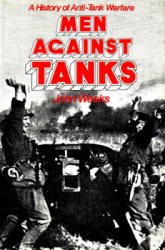By the French 5th Demi-Brigade of Chasseurs Alpins. Two disasters occurred due to local German air and naval superiority: on April 20, the Luftwaffe started heavy air attacks on Namsos, which stopped the landing of artillery and antiaircraft guns, and made the supply of the Allied forces precarious; on April 21, the ice which had been blocking the Qord flanking the route south to Ti'ondheim thawed, enabling German destroyers to land troops behind the advanced positions of the Territorial Brigade at Verdalsora, and to drive it back to Steinkjer before the French were ready to intervene. The Steinkjer area was held until Carton de Wiart’s force was evacuated by sea on May 2-3. WGFJ.
Namur, siege of. The Belgian city of Namur, at the confluence of the Sambre and Meuse, was, like Liege, ringed by forts. In 1914, after the capture of Liege, the German Second Army advanced on Namur, investing it on August 21. The defenders, although reinforced by the Belgian 4th Division and three French battalions, were outnumbered and subjected to a bombardment by the huge German 42 and 30.5cm howitzers used previously at Liege. On August 23, with the loss of three of its northern forts, Namur was evacuated by its defenders and fell next day.
Naking, siege of (1937) see sino-
-JAPANESE WAR.
Nanshan Hill, Battle of (May 25 1904), Russo-Japanese War. In an all-out assault, 30,000 Japanese (losses 4,500) overwhelmed a Russian garrison of 3,000 (losses 1,500) to capture a dominant feature of the Port Arthur defences.
Napalm. An incendiary bomb with spectacular area effect based on petrol (gasolene) which is made into a “jelly” in order to increase its destructive potential both in terms of burning and asphyxiation. First developed in World War II by the Americans it was used both in the close air support role and as a counter-city incendiary weapon. It has been widely used in the former role by many nations since 1945.
Narvik, Battles for (April 9-June 8 1940). The first naval battle took
Place on April 10. Captain War-burton-Lee, with five destroyers, surprised ten larger and more modern German destroyers refuelling after landing the leading elements of 3rd Mountain Division (Dietl) at Narvik. He sank two, disabled three others, and sank seven store ships for the loss of two British destroyers.
In the second naval battle three days later, Vice Adm W J Whitworth in Warspite, with a strong destroyer escort and supported by the aircraft carrier Furious, destroyed the rest of the German destroyers at Narvik, but there was no landing force immediately available to take the town. An unsuccessful attempt to induce the surrender of the Narvik garrison by naval bombardment, rather than direct assault by land forces being assembled under Maj Gen Mackesy at Harstad some 60 miles (96km) away, took place on April
24.
Narvik was gradually brought under siege between April 28 and May 22 by Mackesy’s land forces: British 24th Guards Brigade, the French 27th Demi-Brigade Chasseurs Alpines, 13th Demi-Brigade Foreign Legion under Gen Bethouart, the Polish Brigade {Chasseurs du Nord) under Gen Bohusz-Szyszko, and local Norwegian units under Gen Fleischer. A tolerable air situation was achieved by the establishment of RAF Gladiator fighters on the airfield at Bardufoss, 50 miles (80km) north of Narvik, and air cover provided by carriers.
The German garrison was reinforced by air and by clandestine use of the railway from Sweden. To stop further help reaching them, 24th Guards Brigade was moved south to Bodo to help a force of independent companies (later renamed Commandos) under Brig Gubbins that delayed the advance of 2nd Mountain Division (Feuer-stein) northwards from Trondheim. The final assault of May
27-28 was mounted by Lt Gen Auchinleck with French, Polish and Norwegian troops, supported by British naval gunfire. The 3rd Mountain Division evacuated Narvik and withdrew towards the Swedish frontier, but was able to reoccupy the port when it was evacuated by the Allies on June 8. WGFJ.
Na San, Battle of (1952). From November 23—30 1952, nine
French battalions held off assaults by two regiments of the People’s Army of Vietnam (pavn) at Na San, a fortified strongpoint 125 miles (200km) west of Hanoi. With air support, five batteries of 105mm howitzers and control of the high ground, the French inflicted 6-7,000 casualties. For both sides the battle was a dress rehearsal for Dien Bien Phu: it encouraged the French to set up a post deep in enemy territory to lure the pavn to destruction, while PAVN commanders drew lessons on how to avoid that outcome. WST.
Nasi, Lt Gen Guglielmo. Italian. Commander of the Gondar district, Ethiopia. Invaded southern Sudan, July 1940; organized resistance to patriot forces in northern Ethiopia, 1941; last senior Italian commander to surrender, November 1941.
Nasser, Col Gamal Abd Al-Nasir
(1918-70). Egyptian. Army officer and politician. See also arab-ISRAELI wars; SUEZ CRISIS 1956.
National Liberation Front of South Vietnam (NLF). Needing an overt leadership organ for the revolutionary movement it had already initiated in South Vietnam, the Lao Dong (Workers’, or Vietnam Communist) Party, at its 3rd National Congress in September 1960, authorized the establishment of the National Liberation Front. The nlf had its public unveiling at a Congress of People’s Representatives held in a “liberated area” of South Vietnam on December 20 1960. The front chose a dissident Saigon lawyer, Nguyen Huu Tho, as chairman, and held its first formal congress in February—March 1962. The purpose of the front was to attract noncommunist support; however, while non-communists joined, Communist Party members held the key posts. Through overlapping membership, the Party maintained control of the front at all levels. The real locus of authority and planning on the revolutionary side throughout the Vietnam War was in organs of the Party, such as the Central Office for South Vietnam (cosvn) and the Political Bureau in Hanoi. WST.




 World History
World History


![Road to Huertgen Forest In Hell [Illustrated Edition]](/uploads/posts/2015-05/1432477693_1428700369_00344902_medium.jpeg)






